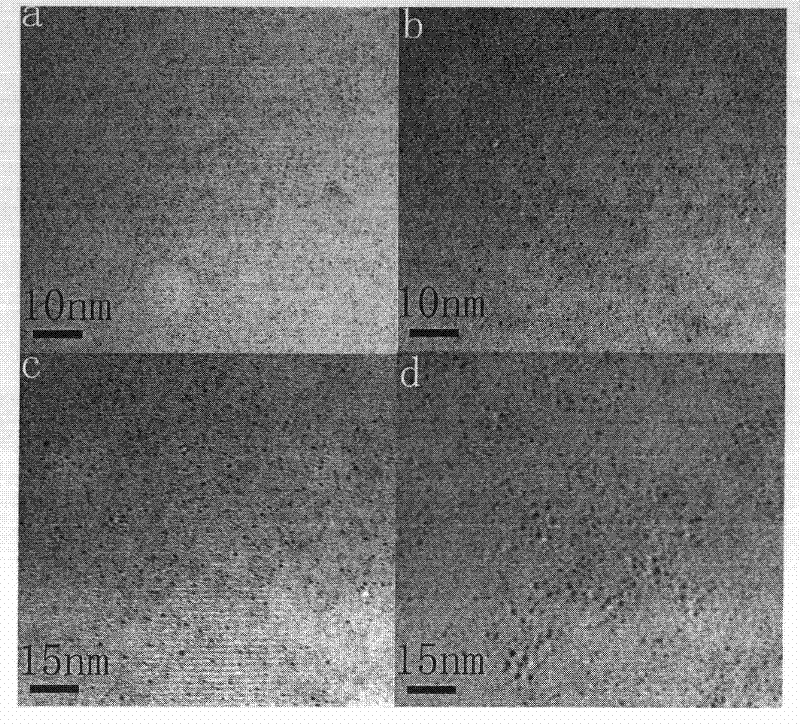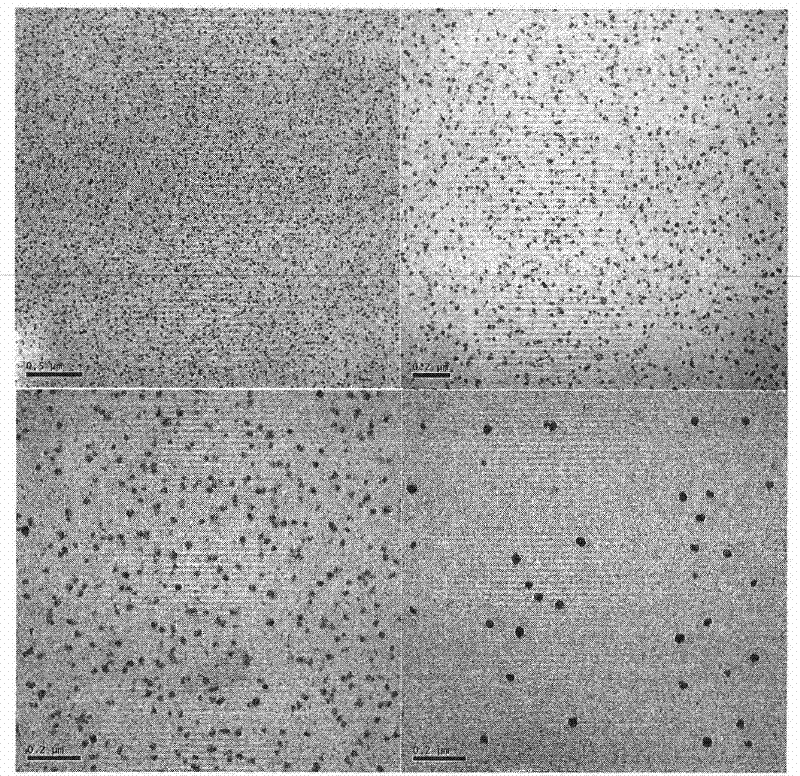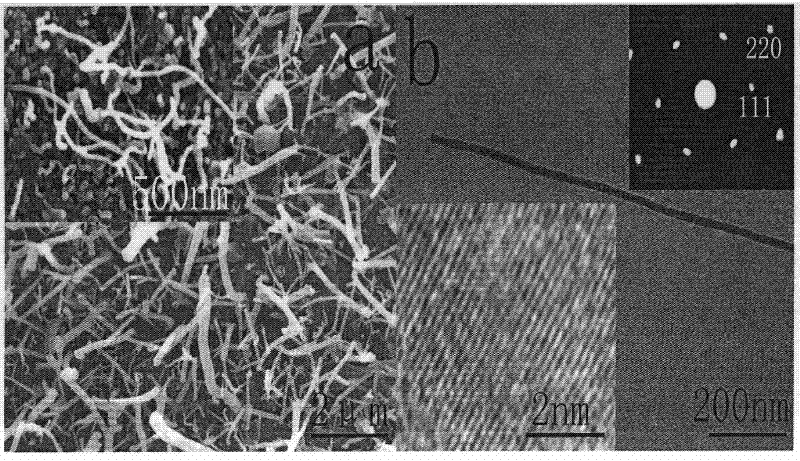An electrochemical method for the controllable preparation of silicon nanostructure materials
A structural material, silicon nanotechnology, applied in the direction of anodic oxidation, etc., to achieve the effect of easy separation or transfer, and easy operation
- Summary
- Abstract
- Description
- Claims
- Application Information
AI Technical Summary
Problems solved by technology
Method used
Image
Examples
Embodiment 1
[0028] Embodiment 1, preparation particle diameter is the silicon quantum dot of 1-4nm
[0029] Mix ethanol solution with a mass concentration of 95%, hydrofluoric acid solution with a mass concentration of 20%, and hydrogen peroxide with a mass concentration of 30% in a volume ratio of 2:1:0.1, add phosphotungstic acid, and make the electrolyte The concentration of phosphotungstic acid in the mixture is 0.02 mg / mL, and after stirring evenly, an electrolyte solution for preparing silicon quantum dots is obtained.
[0030] P-type silicon wafer (conductivity 0.005-30Ω, reaction area 0.5-1cm 2) soaked in hydrofluoric acid with a mass concentration of 5% for 2-5 minutes, then rinsed with ethanol and distilled water in sequence, and then used as an anode, and a graphite rod as a cathode. Take 100ml of electrolytic solution and place it in a plastic electrolytic cell, and add 30 milliliters of cyclohexane into the electrolytic solution (reaction system) to form an organic solvent l...
Embodiment 2
[0031] Embodiment 2, preparation silicon nanoparticle
[0032] Mix 95% ethanol solution and 20% hydrofluoric acid solution according to the volume ratio of 1.5:1, add phosphomolybdic acid, so that the concentration of phosphomolybdic acid in the electrolyte is 0.03 mg / mL, and stir evenly to obtain Electrolyte for silicon quantum dots. Silicon wafer (conductivity 0.005-30Ω, reaction area 0.5-1cm 2 ) soaked in 5% hydrofluoric acid for 2-5 minutes, then rinsed with ethanol and distilled water successively, and then used as an anode, and a graphite rod as a cathode. Take 100ml of electrolytic solution and place it in a plastic electrolytic cell, and add 30ml of cyclohexane into the electrolytic solution to form an organic solvent liquid film above the electrolytic solution. at 15-20mA / cm 2 Under the current density of , the electrochemical oxidation reaction was carried out for 30 minutes, and silicon nanoparticles with a diameter of about 30 nanometers were obtained on the ano...
Embodiment 3
[0033] Embodiment 3, preparation silicon nanowire
[0034] Prepare according to the method of Example 2, but change the current density of the reaction to 20-50mA / cm 2 , carry out the electrochemical redox reaction for 30-60 minutes, and obtain silicon nanowires with a diameter of about 30-80 nanometers on the anode silicon wafer. After the reaction, monodisperse silicon nanowires can be obtained by ultrasonically treating the anode silicon wafer in methanol or ethanol. image 3 . image 3 The inset in a is a partial enlargement, image 3 The upper inset in b is an electron diffraction pattern, and the lower inset is a high-resolution electron micrograph.
PUM
| Property | Measurement | Unit |
|---|---|---|
| concentration | aaaaa | aaaaa |
| diameter | aaaaa | aaaaa |
| diameter | aaaaa | aaaaa |
Abstract
Description
Claims
Application Information
 Login to View More
Login to View More - R&D
- Intellectual Property
- Life Sciences
- Materials
- Tech Scout
- Unparalleled Data Quality
- Higher Quality Content
- 60% Fewer Hallucinations
Browse by: Latest US Patents, China's latest patents, Technical Efficacy Thesaurus, Application Domain, Technology Topic, Popular Technical Reports.
© 2025 PatSnap. All rights reserved.Legal|Privacy policy|Modern Slavery Act Transparency Statement|Sitemap|About US| Contact US: help@patsnap.com



